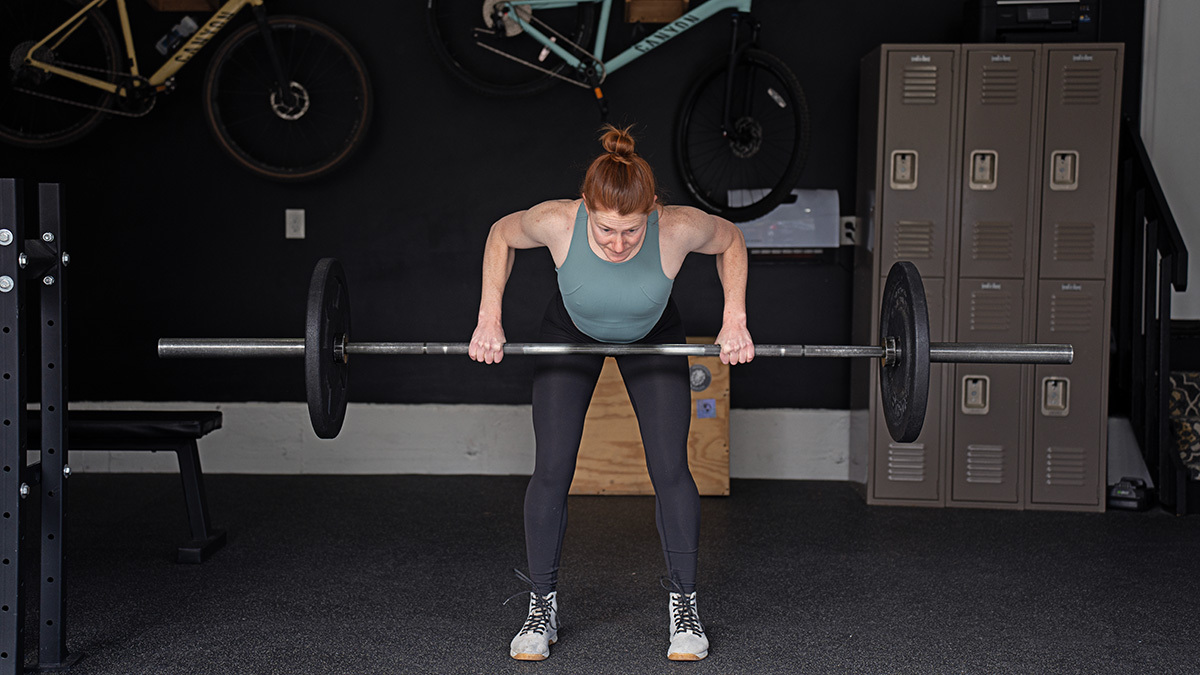If your coach tells you to go out and do a set of hard 400s on the track without warming up, you’d question their authority. Why? Because as an endurance athlete, you know that training on cold muscles has adverse effects on your body and performance.
The same is true when it comes to strength training. If you think you’re saving time by rushing through your strength sessions, think again. Starting your workouts on cold muscles can sometimes do more harm than good. Plus, you’re only cheating yourself on potential gains if you aren’t properly warmed up.
If you’re going to take the time to strength train, you might as well make the most of it – and that starts with the warm-up. Learn how to activate the correct muscles so you can become the strongest, most well-rounded, and resilient endurance athlete you can be.
Move Your Body in All Directions: It’s Good For You
Before we get into how to warm up before strength training, let’s briefly go over what happens when you skip strength training altogether.
Most endurance athletes spend a lot of time practicing one motion repeatedly. For example, runners need to run a lot. And cyclists need to cycle a lot. That’s fantastic for sport-specific fitness and performance, but it only works your body in one plane of motion.
Only working your body in one, repetitive motion often leads to a disengagement and/or atrophy of supportive muscles and a decreased range of motion. And disengaged muscles and a limited range of motion often lead to reduced economy and muscular imbalances, which affect your performance. One example of this is the notoriously disengaged, weak glute medius muscles in distance runners due to running in mostly one direction (straight). Another example is cyclists having tight hip flexors from constantly maintaining a closed hip position while cycling, resulting in IT band tightness and low-back pain.
If you sit at a desk all day, you probably experience these same issues as well. After all, practice is permanence: the more we stay in a position, the more our bodies stick to that position.
Strength training requires you to move your body in different planes of motion, making it a valuable tool for active flexibility, range of motion, and functional strength. It also enhances your athletic endurance performance by making you a more powerful and resilient athlete.
What Happens When You Skip the Warm-Up
As an endurance athlete, your strength workouts probably focus on muscular imbalance, limited ranges of motion, and activating muscles that are a bit “sleepy.” Because of this, skipping the warm-up can dig you into a deeper hole. There’s even research on how proper warmups can reduce risk of injury.
For example, imagine you’re a quad-dominant runner. If you have very active quads that overtake your training, then you likely have inactive glutes, lack ample hip extension, and could benefit from hip strengthening and increasing hip range of motion. But if you never take the time to pre-activate your hip muscles and open up your hip joints before a strength session, then your quads will probably take over in key exercises meant to strengthen other supporting muscles.
This results in more quad domination, thus creating even more of a muscular imbalance than before. If you took the time to fire those glutes and other supportive muscles, you’d perform the exercises correctly and strengthen all the muscles needed to make you a more efficient and injury-resistant runner.
How to Warm Up For Strength Training
Now you know that warm-ups are non-negotiable when it comes to strength training. But what’s in a warm-up, anyways? How do you know if you’re activating the right muscles?
Generally, I recommend taking 20-25 minutes to increase blood flow, work on mobility, and do a few goal-specific activation exercises. Here’s an example of what that might look like:
1. First 10-12 minutes: Low impact general warm up to increase blood flow and enhance muscle elasticity. This could include elliptical, bike, gradual incline treadmill walk, or standing progressive movements such as marching in place, hip openers, hip hurdles, arm reaches, light jogging in place, or jumping jacks.
2. Next 5-7 minutes: Dynamic range of motion movements to increase joint mobility. Deep reverse lunges, lateral lunges, wooden soldiers, thoracic mobility reaches, and deep squats are great range of motion movements. Don’t rush these, and focus on your breathing.
3. Final 5-7 minutes: Goal-specific activation exercises to recruit specific muscles needed to execute key exercises. Examples of these activation exercises include:
a. Bridges and clam shells for overall glute activation. These apply to any hip extension and abduction-generated exercises.
b. Superman extensions to engage lower traps and scapular muscles for upper body exercises.
Activating Your Muscles for Compound Movements
Activating specific muscles that tend to be disengaged is like learning how to speak a new language. And if you want to be fluent in a new language, you’re going to need to work on your vocabulary.
The same concept is applied to controlling how your body moves. You need a diverse muscular vocabulary. In other words, you should be able to efficiently recruit all the muscles needed for a compound movement the same way you put words together to make a sentence.
If you’re missing words in a sentence, you might get your point across, but it won’t be the best way of saying it. Likewise, if you aren’t fully activating all the muscles needed for a compound movement, you may still complete the movement, but it might not be the best expression of it.
The warm-up and activation phase at the start of the strength session helps you connect all the muscles needed to express your best movement possible.
Example: Step-By-Step Glute Activation Routine
Here’s a sample progression to activate your glutes and apply it to a more complex movement, like Bulgarian split squats or a lateral shuffle.
Step 1: Foundational Activation Exercises: 3 sets of 8-10 reps
- Bridge and single-leg bridge
Bridges activate your glutes and strengthen general core stability. They also teach your body to use your glutes for hip extension and stabilize your pelvis (especially the single-leg bridge).
- Side-lying clamshell hip raise
Clamshells activate the glute medius and improve lateral trunk strength and stability. It focuses on supportive hip and trunk muscles that are necessary for stability and posture. This is great warm-up for single-leg exercises or movements that require direction changes.
Step 2: Standing Resisted Supportive Glute Engagement: 3 x 40-60 sec
Standing resisted movements (like squatted side steps with a band) use all the muscles previously activated in Step 1 in an upright position with resistance. It teaches the body to use supportive muscles during lateral movements that optimize movements in all planes of direction and directional changes.
Step 3: Progressed range of motion of exercise: 3 x 8 reps each side
Now that your muscles are fired up in a standing position, it’s time to focus on active mobility, flexibility, and range of motion. Movements like lateral lunges prepare your body for exercises with weights.
Step 4: Single-leg balance and muscular recruitment: 3 x 5 reps
Single-leg squats or single-leg squats with a reach work great here. These movements focus on single-leg stability and strength, proprioception, and core engagement. This is great for movements that primarily load one leg more than the other (like Bulgarian split squats).
Taking the time to prepare your body for strength training allows you to move more freely and get the most out of your strength sessions. In return, you’ll become a more powerful and durable endurance training machine!










